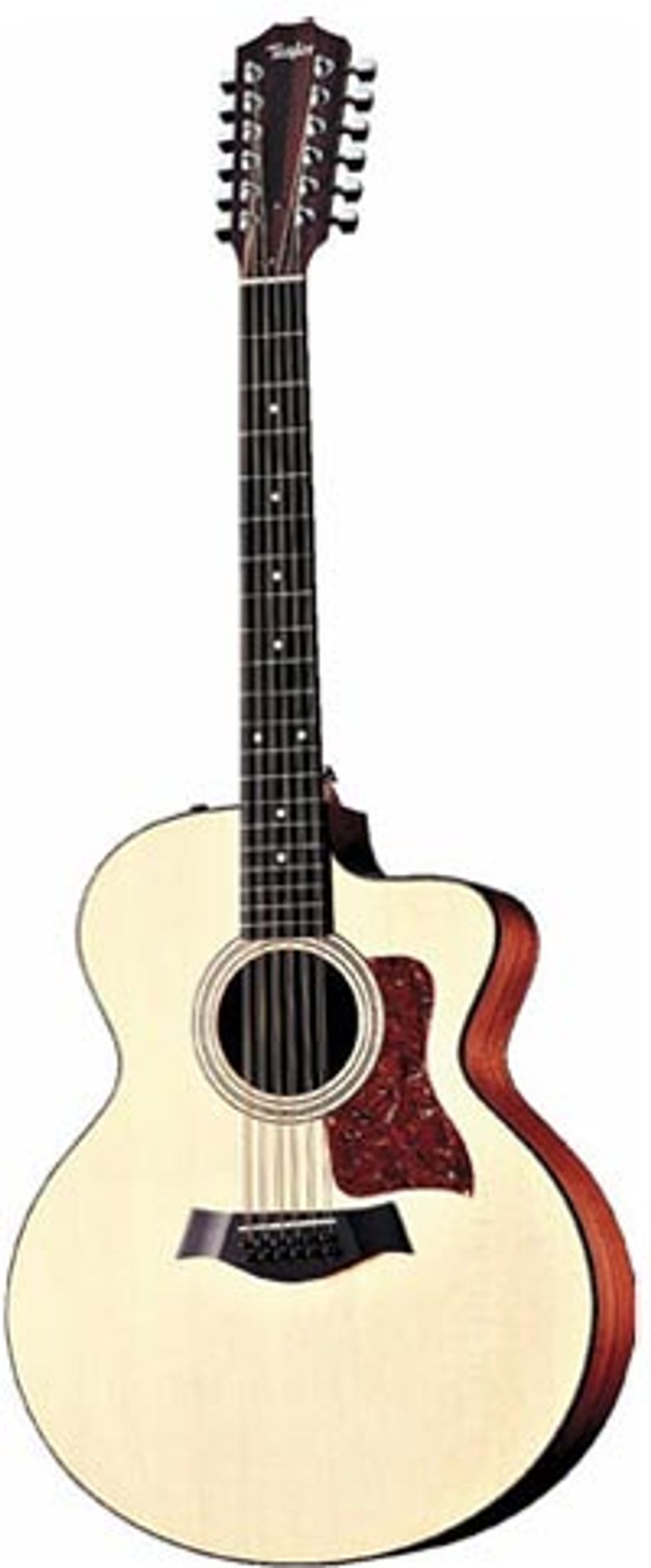Adding a 12-string guitar (a Taylor 355ce is shown here) can bring a different texture to a track. For most of us, using instruments other than our main guitars
 | |
|
The following are suggestions to expand your horizons while recording. These ideas aren’t intended to discount the player’s touch in creating tones or the possibilities available from a single guitar. Instead, they’re suggestions for ways to derive a sonic stamp. Remember, recording sessions are prime opportunities to use the phrase “by any means necessary – and available.” Pawn shop prizes, toys, boutique, solid or hollow, electric, acoustic, nylon-string, 6- or 12-string, fretted or fretless – whatever instruments you can lay your hands on can be put to use in the studio.
The suggestions below work with virtual guitar software or hardware; try mixing virtual and real tools. Remember, these are suggestions – there’s no right or wrong.
Record an electric guitar with humbucking pickups using the neck position. Record an overdub on a second electric guitar with a single-coil in the bridge position. Bring the volumes up equally. Generally, the humbucker provides a thicker, bassier sound while the single-coil has more definition and less “hair” depending on the amp setting. You can achieve a full-spectrum sound without touching your EQ, with natural playing variations providing subtle delay and pitch changes. If you pan the guitars, then the stereo spread adds great dimension.When you combine these approaches with different amps, pedals and effects, you end up with a broad palette to draw from. Of course, this list is by no means comprehensive. Experiment with anything you can lay your hands on, as well as with different recording techniques, mic placements, combinations of direct box and mic’ing – let your creativity take charge!
Record strummed chords on an electric guitar into an overdriven amp and pan up the middle. Record an overdub on an acoustic/electric guitar with a split path; one side via mic, the other through a direct box. Pan these to opposite sides but lower in volume. The idea here is have the acoustic guitar support the electric but not get in the way. I’ll generally bring up the supporting acoustic guitar just to point where it’s audible, make some subtle EQ changes and then pull the volume back a touch. Subtle effects and volume changes can help this technique propel a track.
Record clean arpeggios with the splitpath acoustic/electric technique from the example above. Pan the mic’ed signal up the middle and the DI to the right. Record a Nashville-tuned guitar (electric or acoustic). Pan to the left. Record a 12- string capo’d at the twelfth fret. Pan to center. Nashville tuning (a 12-string with the “regular” six strings removed) isn’t as sonically overwhelming as a full 12-string, but it adds a nice shimmer. The capo’d full 12-string takes on more of a harpsichord or mandolin sound and is effective when mixed in low and with a bit of ambiance.
Record a heavily distorted primary guitar using the split mic/direct box technique. Record a baritone or bass guitar doubling the part. The idea here is to mix in enough of the direct box to add clarity and enough of the bass to heavy up the main track.
Record an acoustic/electric through a distorted electric guitar amp. Feed a lipstick tube pickup into a fuzz and through a direct box. This one is interesting because the acoustic has more body but also has definition. The fuzz guitar borders on complete white noise but has great bottom- end, especially if you use a pedal with germanium circuits.
Happy tracking!
Robert Williams
Sweetwater Sound Sales Engineer Robert Williams plays Tyler and Taylor electrics and Egnater amplification. He has years of experience as a guitarist, engineer, video editor, and broadcast automation integrator at sites across North America and the U.K. Contact him at 1-800-222-4700 ext. 1371 or robert_williams@sweetwater.com.

